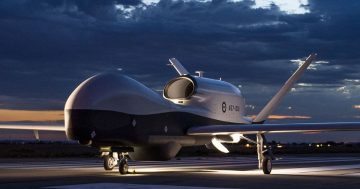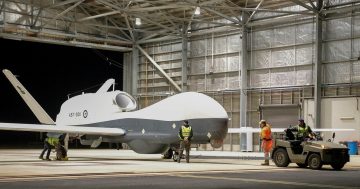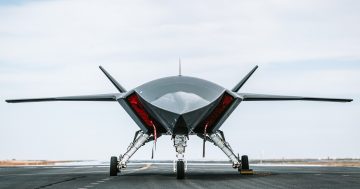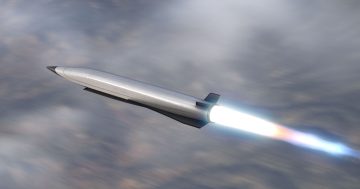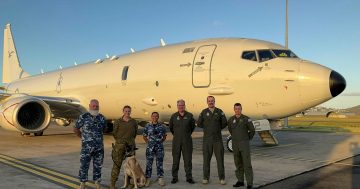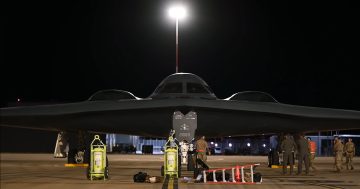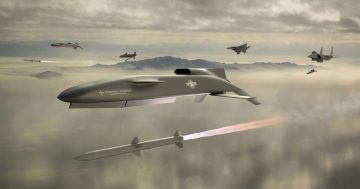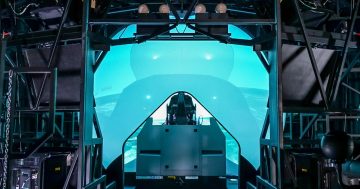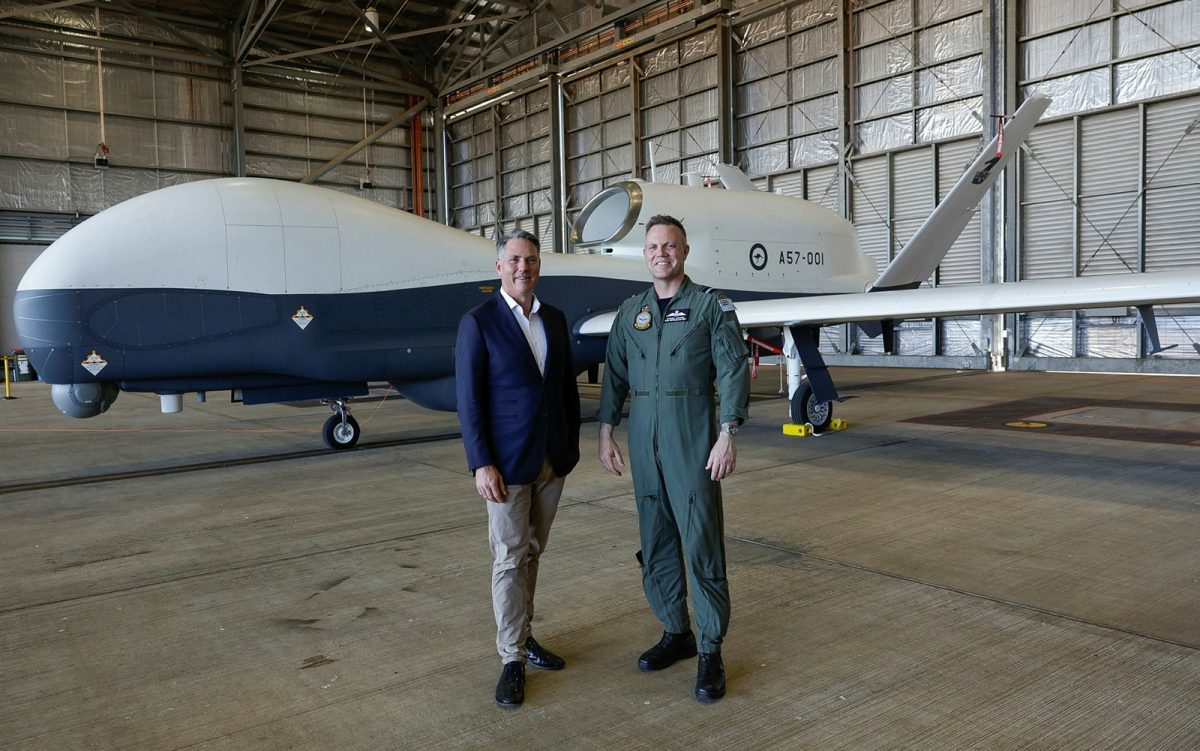
Defence Minister Richard Marles and Chief of Air Force Stephen Chappell welcome the first of four Tritons to Australia at RAAF Base Tindal. Photo: ADF.
A new high-altitude, long-endurance maritime reconnaissance uncrewed aerial system (UAS) has been officially welcomed into Royal Australian Air Force service at a remote Northern Territory airbase.
The first of four Northrop Grumman MQ-4C Triton intelligence, surveillance and reconnaissance (ISR) aircraft arrived in Australia in June after a trans-Pacific delivery flight from California.
The aircraft, which features a 130-foot wingspan – about the same as a commercial 737 airliner, making it the largest drone in service – is designed to fly for 28 or more hours at altitudes above 50,000 feet, allowing it to survey vast areas of Earth’s surface.
The Triton is a development of Northrop Grumman’s RQ-4B Global Hawk UAS, which saw extensive use in operations in the Middle East, and in recent years over the Black Sea on missions to monitor the war in Ukraine.
For maritime operations, the Triton’s wing has been stiffened, with de-icing and bird strike resistance added to the wing leading edge and engine intake, and its sensors optimised for over-water missions.
The Triton’s sensors include an electro-optical/infrared sensor, a radar capable of seeing small boats or objects such as submarine periscopes, and a comprehensive Multi-INT suite, which can monitor signals from communications networks or adversary radars and other sensors.
The Federal Government says the $2.5 billion Project AIR 7000 Phase 1B program to acquire the Tritons will result in $900 million being invested into the Australian economy in the form of facilities construction, network integration, engineering, logistics, component manufacture and sustainment services.
The four aircraft will be primarily based at the substantially revamped RAAF Base Tindal, near Katherine, but will also be capable of operating from other northern bases, including Cocos Island.
Pilots and sensor operators from No 9 Squadron will ‘’fly’’ the aircraft remotely from RAAF Base Edinburgh in Adelaide.
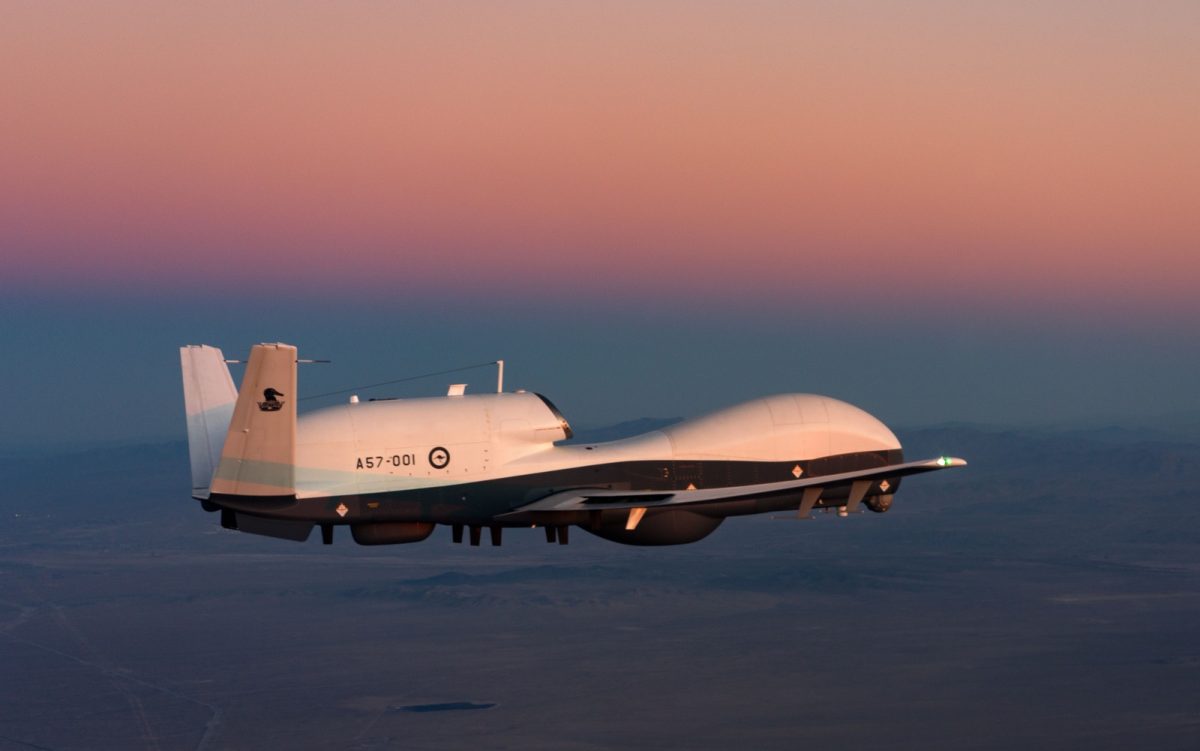
The Triton can fly 28-hour-long missions at altitudes above 50,000 feet. Photo: Northrop Grumman.
Minister for Defence Richard Marles visited Tindal with new Chief of Air Force Air Marshal Stephen Chappell and said the Triton acquisition was about ensuring the ADF was fit for purpose and equipped with the capabilities to meet future challenges.
“We must continue to enhance our operations from Australia’s northern bases, and the MQ-4C Triton is a tangible example of a capability that will assist us in achieving this task,” he said.
Minister for Defence Industry and Capability Delivery Pat Conroy said the Triton would significantly enhance the security of Australia’s maritime borders, which was a key priority supported by the Integrated Investment Program, and as outlined in the National Defence Strategy.
“The arrival of the Triton represents a significant milestone for Air Force and clearly demonstrates the success of the cooperative program with the United States Navy,” he said.
“Our partnership strengthens our ability in joint operations and is underpinned by the strong cooperation with defence industry to develop advanced capability.”
AIRMSHL Chappell said the Triton would complement the RAAF’s existing ISR and significantly enhance the ADF’s ability to persistently patrol Australia’s north and broader maritime approaches.
“The MQ-4C Triton will deliver unprecedented persistence and awareness over the maritime domain in support of the integrated, focused force,” he said.
“Uncrewed aerial systems offer enormous potential to capitalise on the opportunities provided by modern payloads and increased endurance.
“No 9 Squadron itself will be operating from the main operating base at RAAF Base Edinburgh in South Australia.
“We’ll have a small team here with Northrop Grumman maintaining and launching and recovering the aircraft here at RAAF Base Tindal and, as the Deputy Prime Minister mentioned, this will provide an incredibly important and persistent layer of intelligence, surveillance and reconnaissance capability to the ADF’s broader suite of options.”
The aircraft are assembled at Northrop Grumman’s Palmdale facility, near Los Angeles in California. The RAAF’s second aircraft has reportedly recently flown and will enter service next year, while the two others are in various stages of assembly.
While four aircraft are currently on order, Australia has previously expressed a requirement for up to seven Tritons, but it is unclear whether this will ever be fully realised.


